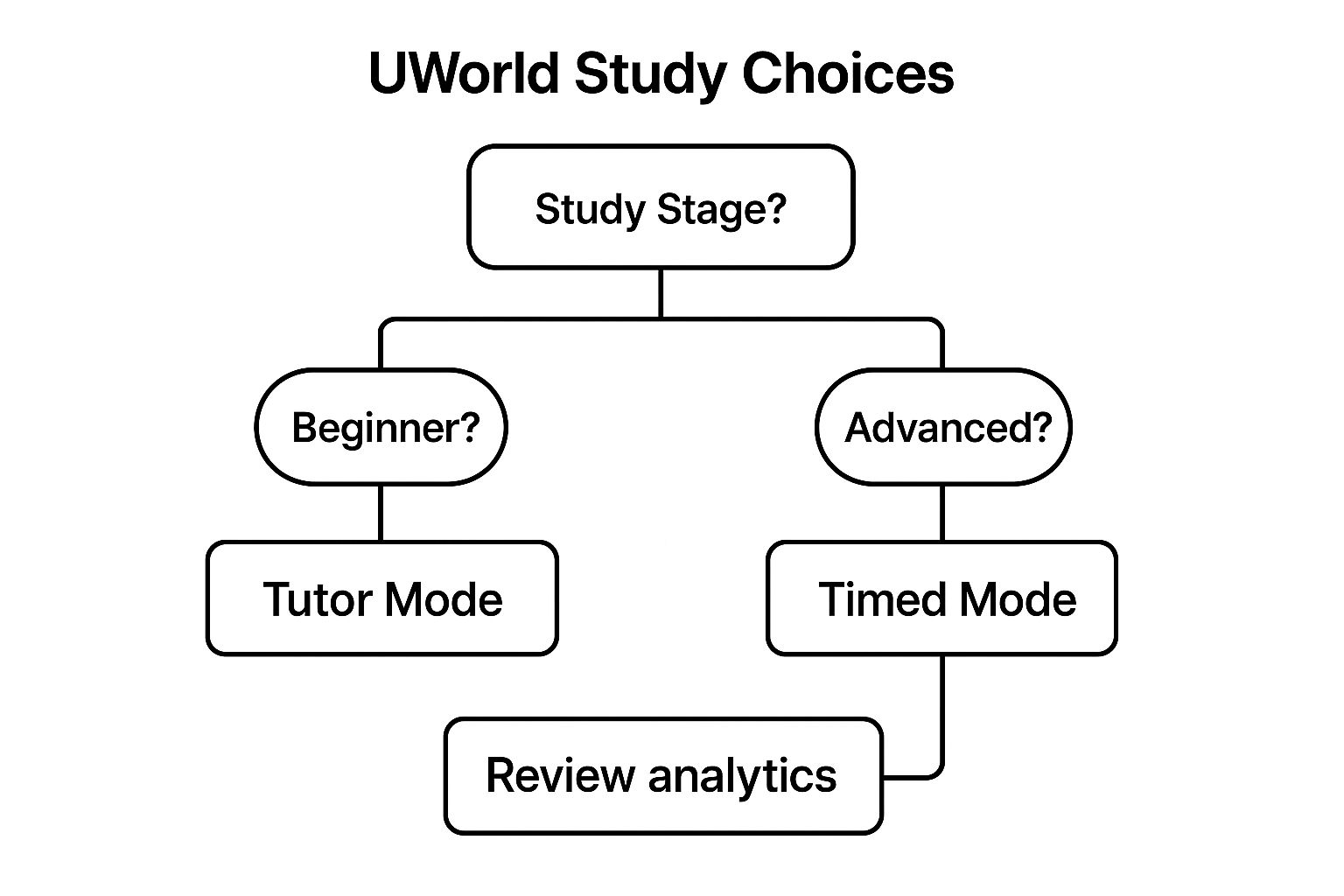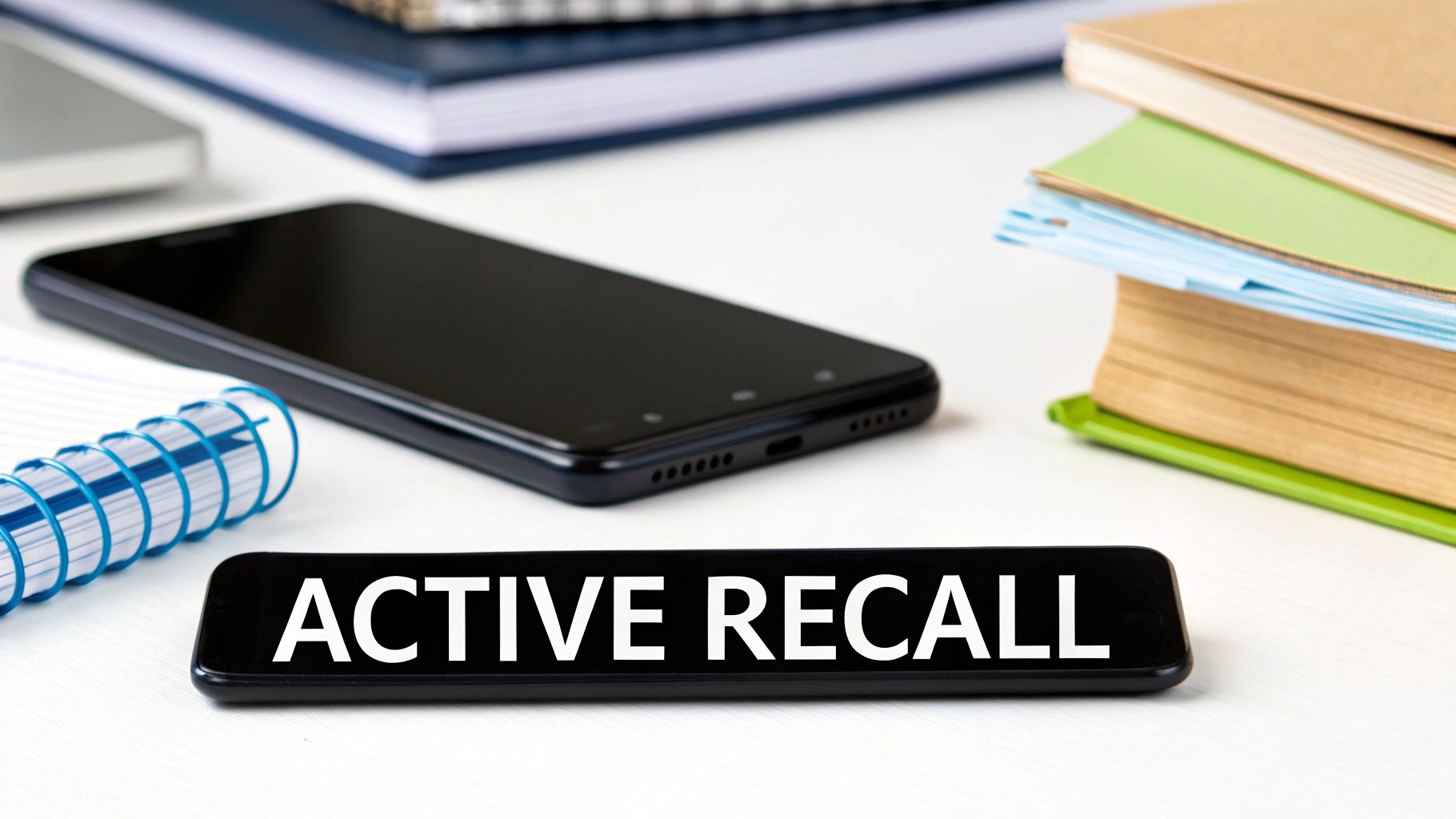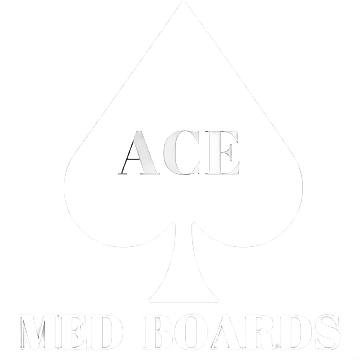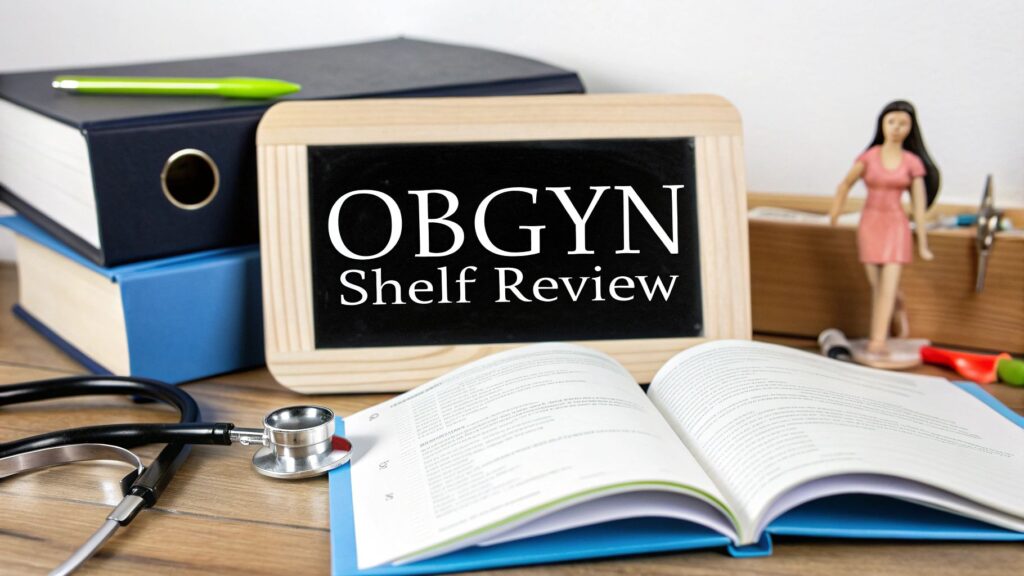The OBGYN clerkship is a demanding rotation, culminating in a shelf exam that tests your grasp of everything from routine prenatal care to complex gynecologic oncology. Scoring well requires more than just attending rounds; it demands a strategic study plan built on high-quality, targeted resources. With countless books, question banks, and flashcard decks available, choosing the right tools can feel overwhelming and quickly drain your limited study time.
This guide is designed to cut through the noise. We have compiled and analyzed the definitive list of the top resources essential for a comprehensive OBGYN shelf review. We move beyond simple descriptions to provide a detailed breakdown of each tool's specific strengths, potential drawbacks, and, most importantly, how to integrate them into your schedule for maximum impact. This isn't just a list; it's a blueprint for building an effective study strategy.
You will learn exactly how to leverage core resources like the UWorld Qbank alongside foundational texts such as Case Files and the official NBME practice exams. We'll also cover how to effectively use supplementary aids like Anki decks and APGO objectives to fill knowledge gaps. Whether you are just starting your rotation or heading into a dedicated study period, this comprehensive review will equip you with the insights needed to select the best resources, study efficiently, and confidently walk into exam day prepared to excel.
1. UWorld OBGYN Qbank
If there is one indispensable resource for your OBGYN shelf review, it is the UWorld question bank. Widely considered the gold standard for NBME subject exams, UWorld provides a comprehensive set of practice questions that closely simulate the style, length, and difficulty of the actual test. Its reputation is built on high-yield clinical vignettes and exceptionally detailed answer explanations that go far beyond simply identifying the correct option.
Each explanation functions as a mini-lesson, breaking down the pathophysiology, diagnosis, and management of the condition in question. They often include helpful tables, diagrams, and illustrations that clarify complex concepts. This makes it an active learning tool rather than just an assessment platform.
Why It's a Top Pick
UWorld's strength lies in its ability to train your clinical reasoning. The questions are designed to make you think like a clinician, integrating patient history, physical exam findings, and lab results to arrive at a diagnosis and management plan. This approach is precisely what the OBGYN shelf exam evaluates.
Key Benefit: Students frequently report that the UWorld user interface and question format are nearly identical to the real NBME shelf exam. This familiarity helps reduce test-day anxiety and allows you to focus entirely on the clinical content.
The platform's analytics are another major advantage. By tracking your performance by subject and system, you can quickly identify your weak areas and dedicate your study time more efficiently.
How to Implement UWorld Effectively
Your approach to using the Qbank should evolve as you progress through your clerkship. For a structured plan, consider the following workflow.
The infographic below illustrates a simple decision-making process for optimizing your UWorld study sessions based on your confidence and progress.

This flowchart highlights that regardless of whether you start in tutor or timed mode, reviewing your performance analytics is a crucial, non-negotiable step for improvement.
- Early/Mid-Clerkship (Tutor Mode): Start with untimed, tutor mode. This allows you to read the detailed explanations immediately after answering each question, which is crucial for building a foundational understanding of core OBGYN topics.
- Late-Clerkship (Timed Mode): In the final 1-2 weeks before the exam, switch to creating timed blocks of 40 questions. This helps you master your pacing and simulates the pressure of the real exam environment.
- Review Thoroughly: Make it a rule to review every question, both correct and incorrect. Create flashcards or notes based on the educational objectives in the explanations. For more advanced strategies on how to maximize your study sessions, check out these medical exam study tips.
Aim to complete at least one full pass of the entire OBGYN Qbank. Many high-scoring students aim for an average of 70-80% correct in the final weeks leading up to their shelf exam.
2. Case Files: Obstetrics and Gynecology
While question banks test your knowledge, Case Files: Obstetrics and Gynecology is designed to build your clinical reasoning from the ground up. This book presents 60 high-yield clinical scenarios that mirror the patient encounters you’ll see on the wards and on the exam. It bridges the gap between textbook knowledge and its practical application in a clinical setting, making it an essential resource for any comprehensive OBGYN shelf review strategy.
Each case walks you through a patient presentation, prompting you to develop a differential diagnosis and management plan before revealing a detailed explanation. This active learning approach, centered on real patient stories, is incredibly effective for solidifying complex concepts in a memorable way.

Why It's a Top Pick
The strength of Case Files lies in its ability to teach you how to think like a physician. Instead of just memorizing facts, you learn to interpret a patient's story, identify key signs and symptoms, and work through a logical diagnostic process. This method is particularly effective for students who find it challenging to apply basic science knowledge to clinical vignettes.
Key Benefit: Many medical schools incorporate Case Files directly into their clerkship curriculum. Its structured approach is especially helpful for international medical graduates (IMGs) adapting to the U.S. style of clinical case presentations and problem-solving.
The book’s format, with its “Clinical Pearls” and comprehension questions at the end of each case, helps distill every scenario into high-yield, testable facts that are easy to review.
How to Implement Case Files Effectively
Integrating Case Files throughout your clerkship, rather than cramming it at the end, will provide the most benefit. Use it to supplement your clinical experiences and reinforce topics you encounter on the wards or in your Qbank.
The video below provides an overview of the Case Files series and how its case-based approach can enhance your learning.
This review highlights how the format is designed to actively engage you in the diagnostic process, which is a key skill for both clinical rotations and the shelf exam.
- Active Reading: Treat each case as a real patient. Read the initial presentation and actively try to formulate a differential diagnosis and initial workup before turning the page to read the explanation.
- Correlate with Clinicals: When you see a patient with preeclampsia on the wards, read the corresponding Case Files chapter that evening. This solidifies the knowledge by linking it to a real experience.
- Supplement, Don't Replace: Use Case Files as a powerful learning tool alongside a primary question bank like UWorld. It builds your foundational reasoning, while a Qbank hones your test-taking skills and assesses your knowledge retention.
- Create Flashcards: After completing a case, create a few flashcards from the "Clinical Pearls" and key teaching points. This is a quick way to create a high-yield review deck for the final days before your exam.
3. Shelf Notes: Obstetrics and Gynecology
For students who need a high-yield, condensed resource for final preparation, Shelf Notes: Obstetrics and Gynecology is an exceptional tool. This book is designed specifically for the time-crunched student, boiling down the vast field of OBGYN into a manageable, quick-reference guide. It focuses exclusively on the most frequently tested topics, presenting them in a highly digestible format of bullet points, tables, and algorithms.
Unlike a comprehensive textbook, its purpose is not deep learning but rapid review and memorization of key facts. It excels at providing the essential buzzwords, diagnostic criteria, and next-best-step management answers that often appear on the NBME subject exam. This makes it an ideal complement to a robust question bank, bridging the gap between practice questions and foundational knowledge.
Why It's a Top Pick
The primary strength of Shelf Notes is its incredible efficiency. In the final weeks leading up to the exam, your time is your most valuable asset. This resource allows you to quickly reinforce core concepts without getting bogged down in extraneous details. Students consistently praise its ability to distill complex topics like hypertensive disorders of pregnancy or the workup of amenorrhea into clear, memorable frameworks.
Key Benefit: This guide is perfect for targeted, last-minute cramming. Its concise format helps solidify high-yield information and mnemonics, which can be the difference-maker for several questions on test day.
The book is often recommended by students who scored highly on their OBGYN shelf review, particularly for its ability to organize information for quick recall. It is structured to help you make rapid connections between presenting symptoms and likely diagnoses, a critical skill for the shelf exam.
How to Implement Shelf Notes Effectively
This resource is best utilized as a supplementary tool during the final, intensive phase of your studying. It should not be your primary learning resource but rather a powerful review aid.
Here's how to integrate it into your study plan for a successful OBGYN shelf review:
- Final 1-2 Weeks: The ideal time to use Shelf Notes is in the one to two weeks before your exam. Read through it multiple times to hammer home the high-yield facts. Its brevity makes repeated passes feasible.
- Pair with a Qbank: Use this book in conjunction with UWorld or another question bank. After completing a block of questions, refer to the relevant sections in Shelf Notes to review the associated topics. This reinforces what you learned from the question explanations.
- Focus on Tables and Algorithms: Pay special attention to the charts, tables, and management algorithms. These are often the highest-yield parts of the book and provide a clear, systematic approach to common clinical scenarios.
- Active Recall: Don't just passively read. Use the bullet points to quiz yourself. Cover the page and try to recall the differential diagnoses for third-trimester bleeding or the steps in managing an adnexal mass.
4. NBME OBGYN Practice Exams
When it comes to predicting your performance and understanding the test-setter's mindset, nothing surpasses the official NBME Clinical Mastery Series practice exams. These are retired shelf exams created by the National Board of Medical Examiners, the very same organization that writes and administers your actual OBGYN shelf. This makes them the highest-fidelity resource for gauging your readiness and simulating the real testing experience.
The questions on these practice exams are constructed with the same logic, phrasing, and topic distribution as the live test. Completing these exams provides a crucial benchmark, revealing not just what you know but also how well you can apply that knowledge under the specific constraints and question styles favored by the NBME.
Why It's a Top Pick
The primary value of the NBME practice exams is their predictive power and authenticity. Unlike commercial Qbanks, which simulate the exam, these exams are the exam, just in a retired form. This direct lineage provides an unparalleled opportunity to familiarize yourself with the precise feel and difficulty of the test you will be taking. The score you receive is often a highly accurate predictor of your final shelf score.
Key Benefit: Many students report that their final shelf score is within 5-10 points of their performance on the final NBME practice exam they took. This high correlation, often cited as 0.85 or higher, makes it an invaluable tool for final-week assessment.
Using these exams helps you identify remaining knowledge gaps in high-yield areas. The score report, while not as detailed as UWorld's analytics, highlights the question types you missed, allowing you to focus your final study efforts with precision.
How to Implement NBME Exams Effectively
Timing and strategy are critical when using these valuable assessments. Because there are a limited number of forms available, you should use them judiciously as part of your dedicated OBGYN shelf review.
- Timing is Key: Reserve these exams for the last 1-2 weeks of your clerkship. Taking them too early will not provide an accurate assessment of your final knowledge base and wastes a precious resource.
- Simulate Exam Conditions: Take each practice test under strict, timed conditions. Find a quiet space, turn off your phone, and complete the entire block in one sitting to accurately replicate the mental fatigue and pressure of test day.
- Use as a Diagnostic Tool: After completing an exam, thoroughly review every question. Don't just focus on what you got wrong; analyze why you got questions right to ensure your reasoning was sound. Use your performance to create a targeted study plan for your final days of prep. For more strategies on integrating practice tests into your study schedule, you can learn more about how to study for shelf exams.
Think of the NBME exams as a dress rehearsal. Their purpose is to give you a final, realistic preview, build your confidence, and provide the last pieces of data you need to walk into the testing center fully prepared.
5. First Aid for the OBGYN Clerkship
From the same trusted team that created the legendary Step 1 review book, First Aid for the OBGYN Clerkship serves as a foundational text for the rotation. It provides a comprehensive, high-yield summary of all the core topics you will encounter, from routine prenatal care to complex gynecologic oncology. It is meticulously organized to give you a systematic overview of both obstetrics and gynecology.
The book condenses essential information into digestible sections filled with mnemonics, tables, and illustrations. Its format is designed for quick review and targeted learning, making it an excellent companion to use alongside more active learning resources like question banks. Many students use it to build their initial knowledge base before diving into clinical vignettes.
Why It's a Top Pick
The primary strength of First Aid for the OBGYN Clerkship lies in its high-yield focus. The authors have expertly filtered the vast amount of information in the field down to what is most likely to be tested on the shelf exam and encountered on the wards. This targeted approach saves you from getting bogged down in overly detailed or low-yield material, a common challenge in this specialty.
Key Benefit: This book excels at providing a structured framework for your studies. By reading the relevant chapter before a lecture or clinic day, you can contextualize the information you receive, making your clinical experiences significantly more valuable.
The inclusion of clinical vignettes and end-of-chapter practice questions, while not as extensive as a dedicated Qbank, helps reinforce key concepts. This combination of review text and light practice makes it an effective all-in-one resource for getting started on your OBGYN shelf review journey.
How to Implement First Aid Effectively
To get the most out of this book, you should integrate it into your daily study routine throughout the clerkship, not just cram it at the end. Consider this approach for optimal results.
- Build a Foundation Early: In the first week of your rotation, skim the entire book to get a broad overview of the subject. Then, read the specific chapters that correspond to your clinical placement (e.g., read the labor and delivery chapters while on L&D).
- Active Annotation: Use this book as your central note-taking repository. Annotate the margins with key pearls from UWorld explanations, attending teachings, and other resources. This transforms the book from a passive text into a personalized, high-yield study guide.
- Targeted Weakness Review: After completing a block of practice questions from a Qbank, use the First Aid index to quickly look up and review the topics you struggled with. This targeted approach is far more efficient than re-reading entire chapters. For an authoritative source to pair this with, consider the official guidelines from the American College of Obstetricians and Gynecologists (ACOG).
Many top-scoring students report using First Aid as their primary reference text, systematically working through it in parallel with the UWorld Qbank to ensure comprehensive coverage.
6. Anki OBGYN Decks (Dorian, AnKing)
For memorizing the vast amount of factual information required for the OBGYN shelf, nothing beats the power of spaced repetition. Anki, a free and open-source flashcard program, leverages this evidence-based learning technique to help you retain high-yield facts, mnemonics, and clinical associations with incredible efficiency. Community-created decks like Dorian and the comprehensive AnKing Overhaul are staples for this very reason.
These decks are not just random collections of facts; they are meticulously curated, often tagged by resource (like UWorld or ACOG guidelines), and peer-reviewed by thousands of medical students. This structure allows you to systematically master the key details that differentiate one diagnosis from another, which is a critical skill for your OBGYN shelf review.

Why It's a Top Pick
Anki’s primary strength is its algorithm, which schedules card reviews at increasing intervals based on your performance. This method forces you to retrieve information just as you are about to forget it, cementing it into your long-term memory. Unlike passive reading, Anki promotes active recall, a more effective study method for lasting comprehension.
Key Benefit: Anki transforms studying from a passive activity into an active, engaging process. Instead of just reading about the differential diagnosis for third-trimester bleeding, you are actively forced to recall it, which significantly improves retention and your ability to apply knowledge under pressure.
The customizability of Anki is another major benefit. You can suspend cards on topics you already know, create custom-filtered decks to focus on weak areas identified through your Qbank performance, and even add your own notes, screenshots, and diagrams to existing cards.
How to Implement Anki Effectively
Integrating Anki into your daily routine is the key to its success. It is not a tool for last-minute cramming but a system for long-term knowledge acquisition. For a structured plan, consider the following workflow.
By committing to a daily review schedule, you leverage the full power of the spaced repetition algorithm to build a durable knowledge base throughout your clerkship.
- Start Early: Begin using the relevant Anki deck on the first day of your rotation. Unsuspend cards related to the topics you are covering in the clinic or on your current service (e.g., Labor & Delivery, GYN Surgery).
- Maintain Daily Reviews: The magic of spaced repetition only works if you do your reviews every day. Set aside 20-30 minutes daily to clear your due cards. This consistency is more important than long, infrequent cram sessions.
- Integrate with Qbanks: As you work through UWorld or AMBOSS, unsuspend or create cards based on concepts you missed. This directly reinforces your weak points and ensures you learn from your mistakes. For a deeper dive into this technique, you can discover more about active recall for medical students.
- Don't Rely on Anki Alone: Remember that Anki is a supplementary tool for memorization, not a replacement for understanding. It should always be used in combination with practice questions, which teach you how to apply the facts you've learned to clinical vignettes.
7. APGO (Association of Professors of Gynecology and Obstetrics) Educational Objectives
While question banks and textbooks are your tools for learning, the APGO Educational Objectives are the official blueprint for your OBGYN shelf review. Created by the Association of Professors of Gynecology and Obstetrics, this document outlines the core knowledge, skills, and attitudes a medical student is expected to master during their clerkship. It is the curriculum standard used by clerkship directors nationwide and heavily influences the content of the NBME shelf exam.
Think of it as the ultimate checklist for your studies. It details every condition, procedure, and clinical scenario that is considered fair game. Reviewing this document ensures you are not just studying broadly but are targeting the precise topics designated as essential for competence in obstetrics and gynecology at the medical student level.
Why It's a Top Pick
The primary strength of the APGO objectives lies in their authority. This isn't a third-party interpretation of what might be on the exam; it's the source material from which the exam is built. By aligning your studying with these objectives, you are directly preparing for the questions you will face. It allows you to identify and fill knowledge gaps with surgical precision.
Key Benefit: Using the APGO objectives as a study guide transforms your review from a passive process of content consumption to an active, goal-oriented mission. It helps you answer the crucial question, "Have I covered everything I need to know?" with confidence.
Many clerkship directors explicitly provide these objectives to students at the start of the rotation. If yours doesn't, seeking them out on the APGO website is a proactive step that will pay significant dividends in your final grade and shelf score.
How to Implement the APGO Objectives Effectively
Integrating this resource into your study plan provides structure and a clear endpoint. It acts as a map, guiding you through the vast landscape of OBGYN topics.
Consider this document your North Star throughout the clerkship.
- Beginning of Clerkship: At the very start of your rotation, download and read through the entire document. This initial pass will give you a bird's-eye view of the curriculum, helping you contextualize the clinical experiences and didactic sessions you will encounter.
- Mid-Clerkship Check-in: As you complete question blocks or read chapters, cross-reference the topics with the objectives. Use a simple system to mark your confidence level for each objective (e.g., green for confident, yellow for needs review, red for weak). This turns the document into a dynamic progress tracker.
- Final Review (Final 1-2 Weeks): In the days leading up to the exam, use the objectives as your final checklist. Systematically go through your "yellow" and "red" items, using your other resources like UWorld or OnlineMedEd to solidify your understanding. This focused review is far more efficient than re-reading entire textbooks.
7-Resource OBGYN Shelf Review Comparison
| Resource | Core Features / Content | User Experience & Quality ★ | Value Proposition 💰 | Target Audience 👥 | Unique Selling Points ✨ |
|---|---|---|---|---|---|
| UWorld OBGYN Qbank | 500+ high-yield questions, detailed explanations, adaptive learning | ★★★★★ Realistic NBME-style questions, analytics | 💰 $90-200, subscription-based | Med students aiming for top shelf scores | 🏆 Gold standard Qbank, mobile app, tutor/timed modes |
| Case Files: Obstetrics and Gynecology | 60 clinical cases, structured analysis, clinical pearls | ★★★★ Enhances clinical reasoning, portable | 💰 $35-50, affordable book | Students preferring case-based learning | ✨ Real patient scenarios, clinical pearls & questions |
| Shelf Notes: Obstetrics and Gynecology | Concise bullet points, high-yield mnemonics, practice questions | ★★★ Time-efficient, quick reference | 💰 $25-40, budget-friendly | Time-constrained students, last-minute review | ✨ Shelf exam-specific, easy to carry |
| NBME OBGYN Practice Exams | Official practice exams, real exam format | ★★★★ Most accurate shelf exam predictor | 💰 $50-60 per exam | Students close to exam date | 🏆 Official NBME source, authentic experience |
| First Aid for the OBGYN Clerkship | Comprehensive review, high-yield facts, vignettes | ★★★★ Balanced depth & brevity | 💰 $40-55, mid-range book | Learners building foundational knowledge | ✨ Trusted First Aid brand, clinical correlations |
| Anki OBGYN Decks (Dorian, AnKing) | Thousands of flashcards, spaced repetition | ★★★★ Excellent for long-term retention | 💰 Free (Anki app $25 iOS) | Self-directed, discipline for daily use | ✨ Customizable, active recall, offline use |
| APGO Educational Objectives | Official curriculum, detailed learning goals | ★★★ Structured, comprehensive but dry | 💰 Free | Clerkship directors, students wanting blueprint | ✨ Official exam blueprint, free online access |
Your Final Checklist for Acing the OBGYN Shelf
Successfully navigating your OBGYN shelf review is less about finding a single "magic bullet" resource and more about building a resilient, multi-layered study system. Throughout this guide, we have dissected the premier tools at your disposal, from the non-negotiable UWorld Qbank to the high-yield synthesis of Shelf Notes. The journey to honoring this clerkship is paved with strategic choices, consistent effort, and a deep understanding of how each resource uniquely contributes to your knowledge base.
Your path forward is not about acquiring every book or subscription mentioned but about making intelligent, personalized selections. The goal is to create a study ecosystem where each component addresses a specific learning need, preventing burnout while maximizing retention and clinical reasoning skills.
Synthesizing Your Study Strategy
Let's distill the core principles from our deep dive into the best OBGYN shelf review materials. Think of this as your final pre-rotation checklist to ensure you’re starting on the right foot.
Foundation First: Your primary focus should always be a high-quality question bank. UWorld is the undisputed gold standard for a reason. Its detailed explanations are a learning tool in themselves, teaching you not just the "what" but the "why" behind each diagnosis and management step. Dedicate the majority of your study time here, completing questions in timed, random blocks to simulate exam conditions.
Context is King: Questions alone can feel disjointed. This is where a resource like Case Files: Obstetrics and Gynecology becomes invaluable. By anchoring concepts within realistic clinical vignettes, you build the mental scripts necessary to excel on the wards and on the exam. It transforms abstract knowledge into practical application.
Reinforce with Repetition: The sheer volume of information in OBGYN can be overwhelming. Spaced repetition is your most powerful ally against the forgetting curve. Anki decks, whether you use a pre-made one like Dorian or build your own from UWorld incorrects, are essential for cementing high-yield facts, algorithms, and differential diagnoses into your long-term memory.
Benchmark Your Progress: You cannot improve what you do not measure. The NBME OBGYN practice exams are your most accurate predictors of performance. Use them strategically: one at the midpoint of your clerkship to identify weak areas and another a week before the real exam to build confidence and refine your test-taking rhythm. Analyze every question, right or wrong, to squeeze maximum value from these official materials.
Beyond the Books: Optimizing Your Workflow
Mastering the content is only half the battle; managing your time effectively is the other. The OBGYN clerkship is notoriously demanding, with long hours that can easily derail even the best-laid study plans. This is where optimizing your overall workflow becomes a critical component of your success. Look for opportunities to reclaim minutes and hours in your day. For instance, efficiency in your clinical duties translates directly to more study time. Exploring advancements in tools like medical voice recognition software can help streamline your note-writing and patient documentation, freeing up valuable time for dedicated shelf exam review.
Putting It All Together: A Final Word of Encouragement
You have the roadmap. You have the analysis of the best tools for the job. The final piece of the puzzle is execution. The difference between a passing score and an honors-level performance often comes down to consistency. A little bit of work done every day, even on your busiest shifts, compounds into a powerful advantage.
Trust the process you build for yourself. Adapt your schedule as needed, but never abandon your core principles: active learning through questions, contextual understanding through cases, and long-term retention through spaced repetition. This comprehensive approach to your OBGYN shelf review will not only prepare you for the exam but will also build a solid foundation of knowledge that will serve you throughout your medical career, regardless of your chosen specialty. You have the tools and the strategy; now it is time to execute with confidence.
Feeling overwhelmed or need personalized guidance to optimize your study plan? Ace Med Boards offers one-on-one tutoring with expert physicians who have excelled on their own exams. We can help you build a customized strategy using these very resources to target your weaknesses and maximize your score on the OBGYN shelf. Learn more at Ace Med Boards and start your journey to honors today.

